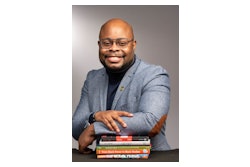I heard another person decry the student loan forgiveness plan of the Biden-Harris administration as one that furthers the moral turpitude of our country.
Yes, there are people who really believe that.
If I had a dollar for every time I heard someone put down the Biden-Harris forgiveness plan, I might be able to pay off that Parent’s Plus loan I took out for one of my kids. Most folks just don’t understand how the student loan programs have been used by corporate for-profits posing as legitimate educational institutions to take advantage of Title IV of the Higher Education Act.
 Emil Guillermo
Emil Guillermo
That’s what’s enabling schools that exist solely for the purpose of making direct loans to a great number of students of color. These schools would not exist were if the vast majority of their revenues (and profit) didn’t come from making direct student loans to students.
The HEA is a built-in incentive for schools to make loans no matter whether they get paid back or not. The important figure is the ratio. Ninety-percent of a school’s revenues are allowed to come from the federal student loan program. Ten percent must come from other sources like students’ paying back their loans.
Schools actually get money directly from the feds to loan out to students as their main revenue and profit. They stay within the 90/10 ratio by getting revenue from students paying off their loans. And when students default at a high rate, the debt is often sold to collection agencies, adding another income flow to that 10 percent.
And that’s it. That’s the for-profit college business model.
Too bad it turns out to be like a de facto federal welfare model that sustains many for profit educational corporations. They don’t need to get alumni to donate to help keep the doors open. Truthfully, the likelihood of a wealthy alum is slim on a graduating dental tech’s salary. But that’s OK, schools just need the constant flow of students who won’t know what hit them when promises of “lifetime employment,” or jobs after completion of programs don’t materialize.
Those students sustain for-profit schools just by taking out the loans. So don’t blame the students. If you’re looking for a sense of “moral turpitude” in the student loan biz, look no further than the for-profit schools that look better on paper than in reality, selling students seeking hope and opportunity a bill of goods.
The Department of Education recently added to the Hall of Shame that already includes such institutions as the now defunct Corinthian College and ITT Tech.
Now add the new kid, Westwood College. A week after Biden’s forgiveness plan was announced the Department of Education announced a separate $1.5 billion debt relief package for 79,000 borrowers who attended Westwood College, shut down since 2016.
“Westwood operated a culture of false promises, lies and manipulation in order to profit off student debt that burdened borrowers long after Westwood closed,” said Education Undersecretary James Kvaal in a statement.
With evidence from state attorneys general in Colorado and Illinois, the Department of Education described how Westwood “routinely misled prospective students by grossly misrepresenting that its credentials would benefit their career prospects and earning potential.”
Specifically, Westwood promised students jobs in their fields within six months of graduation that would “make them employable the rest of their lives.” Everything was inflated. Like a guarantee of employment pledge. The department found no evidence the school ever followed through.
Going after specific cases like Westwood shows where the egregious abusers are. It’s a small cadre of folk. And the practitioners in the field should all be getting the message.
In the Westwood College example, the school was run by Alta College but acquired in 2002 by a private equity firm. George Burnett was a co-founder of Alta and getting acquired was like a feather in his cap. He was named president of the University of Phoenix earlier this year. But, Burnett left that post soon after Department of Education officials began inquiring more deeply what happened at Westwood.
The Westwood case now brings the Department of Education’s success rate in exposing predator college practices to an impressive $14.5 billion of discharges for nearly 1.1 million borrowers.
This all is on top of the general student loan forgiveness plan announced by Biden that should help not just the for-profit borrowers, but also borrowers attending public two- and four-year institutions, as well as traditional private colleges ($10,000 in loan forgiveness for individuals making $125,000, with another $10,000 for Pell Grant recipients).
But for the most part the real problem with student loans are the education predators, the “private-for-profit” colleges, that make more than 30 percent of all student loans.
Many of these PFP’s took BIPOC students for a ride.
Government and others in higher ed need to do more to expose the for-profit business model, perhaps to lower the 90-10 loan income ratio to as low as 70-30. Make the schools show they are more than just loan gatherers and enrollers. At a minimum, schools must live up to the promises made to their students.
In the meantime, you’ll hear people on the Left say Biden should have forgiven more student debt. While on the right, people will argue cost and morals. You just need to point out the real situation in student loans that need reforms. The schools that exist to make loans.
They need to understand students deserve all the loan forgiveness they can get. And the for-profit predators? They deserve our scorn.
Emil Guillermo is a journalist and commentator. He writes for the Asian American Legal Defense and Education Fund. You can follow him on Twitter @emilamok



















